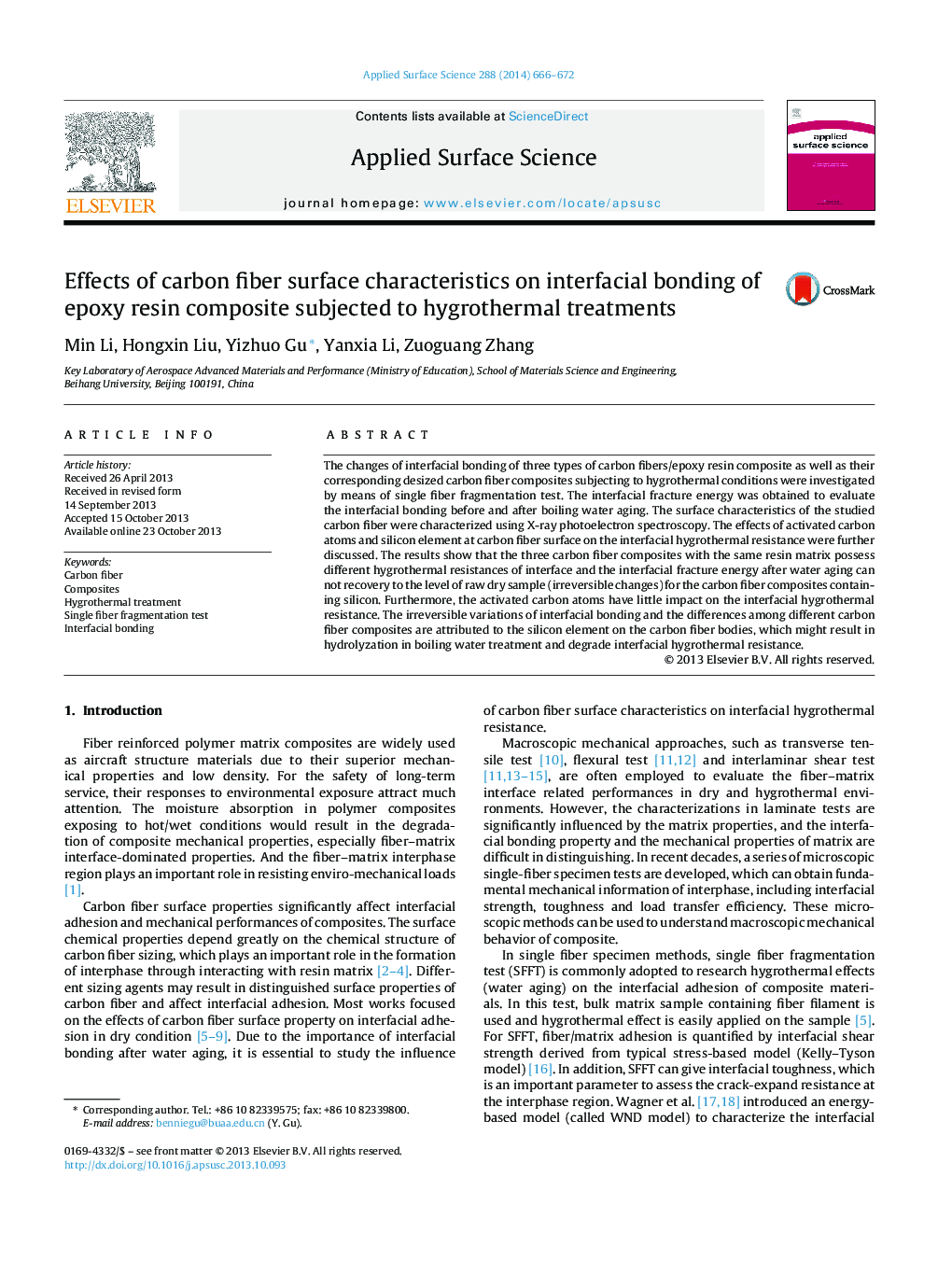| Article ID | Journal | Published Year | Pages | File Type |
|---|---|---|---|---|
| 5351896 | Applied Surface Science | 2014 | 7 Pages |
Abstract
The changes of interfacial bonding of three types of carbon fibers/epoxy resin composite as well as their corresponding desized carbon fiber composites subjecting to hygrothermal conditions were investigated by means of single fiber fragmentation test. The interfacial fracture energy was obtained to evaluate the interfacial bonding before and after boiling water aging. The surface characteristics of the studied carbon fiber were characterized using X-ray photoelectron spectroscopy. The effects of activated carbon atoms and silicon element at carbon fiber surface on the interfacial hygrothermal resistance were further discussed. The results show that the three carbon fiber composites with the same resin matrix possess different hygrothermal resistances of interface and the interfacial fracture energy after water aging can not recovery to the level of raw dry sample (irreversible changes) for the carbon fiber composites containing silicon. Furthermore, the activated carbon atoms have little impact on the interfacial hygrothermal resistance. The irreversible variations of interfacial bonding and the differences among different carbon fiber composites are attributed to the silicon element on the carbon fiber bodies, which might result in hydrolyzation in boiling water treatment and degrade interfacial hygrothermal resistance.
Related Topics
Physical Sciences and Engineering
Chemistry
Physical and Theoretical Chemistry
Authors
Min Li, Hongxin Liu, Yizhuo Gu, Yanxia Li, Zuoguang Zhang,
